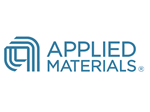Applied Materials Breakthrough To Bring OLED Displays to Tablets, PCs and TVs
- New Applied Materials MAX OLED™ solution enables OLED display manufacturing on larger glass panels, bringing the superior display technology found in high-end smartphones to tablets, PCs and TVs
- Patented OLED pixel architecture and dramatically different manufacturing approach improve all types of OLED displays, making them even brighter, clearer, more energy-efficient and longer-lasting
- The integrated system combines the OLED deposition and encapsulation technologies needed to mass-produce superior OLED displays
OLED is the display technology of choice for the world’s leading smartphone manufacturers because it offers superior display quality, light and flexible form factors, and durability. However, until today, it has proven challenging to scale OLED display manufacturing to the larger glass panels used to make displays for tablets, PCs and TVs.
Applied’s MAX OLED solution makes it easier to scale OLED manufacturing from Gen 6* glass substrates to Gen 8* substrates, which are approximately two times larger, and beyond. In addition, the MAX OLED solution deposits OLED materials in a new way that increases pixel brightness and resolution, reduces display energy consumption, and lengthens display lifetime.
The MAX OLED solution has strong customer interest, with repeat orders from multiple leading display manufacturers. Additionally, Applied will supply a MAX OLED solution to
“The consumer electronics industry has been waiting for a breakthrough that can bring OLED technology to the hundreds of millions of tablets, PCs and TVs sold each year,” said
Making OLED Displays Brighter, Longer-Lasting and More Energy-Efficient
OLED displays are difficult to manufacture because the materials used to emit red, green and blue are fragile and ruined by any exposure to air or moisture. Applied’s MAX OLED solution is a breakthrough technology that deposits and encapsulates each pixel individually using a specially designed maskless process. Applied’s approach is precise, fast and superior at maintaining the purity of delicate OLED materials.
Applied’s proprietary solution uses selective deposition to enable excellent pixel placement accuracy, more than doubling the amount of OLED material per area as compared to previous technologies. The technology can increase OLED display brightness by as much as 3X and increase resolution by as much as 2.5X, to approximately 2,000 pixels per square inch. The solution can also reduce display power consumption by more than 30 percent and increase display lifetime by up to 5X.
“Applied Materials has developed a true breakthrough in OLED manufacturing technology that will enable better OLED displays at more attractive prices,” said
New OLED Pixel Architecture, Process Recipe and Integrated Materials Solution
The MAX OLED solution is more than equipment: it begins with a proprietary pixel architecture built using a patented manufacturing recipe that results in best-in-class OLED pixels and displays. The manufacturing system combines a number of critical manufacturing modules in a single, high-vacuum system that protects the delicate OLED materials from the environment and reduces yield-killing particles. The MAX OLED system integrates display glass handling, multiple OLED deposition steps, and OLED encapsulation. Many of the core technologies used by the MAX OLED solution have already been proven by Applied in making large-area LCD screens at panel sizes up to Gen 10.5*.
The MAX OLED solution reduces the energy consumption of OLED display fabs, requires significantly less OLED materials, and eliminates the need for mask cleaning chemicals, thereby reducing the environmental impact of display manufacturing.
A Growing OLED Display Opportunity
Applied is already the world’s largest provider of display manufacturing equipment, with a broad portfolio of products spanning CVD** and PVD** deposition, CVD thin-film encapsulation, and eBeam testing and inspection. The MAX OLED solution is expected to more than double Applied’s served addressable market opportunity in OLED display manufacturing.
*Gen 6 glass panel surface area = 2.78 square meters; Gen 8 surface area = 5.5 square meters; Gen 10 surface area = 9.9 square meters
**PVD = physical vapor deposition; CVD = chemical vapor deposition
Forward-Looking Statements
This press release contains forward-looking statements, including those regarding anticipated benefits of our new products and technologies, expected growth and trends in our businesses and markets, industry outlooks and demand drivers, technology transitions, and other statements that are not historical facts. These statements and their underlying assumptions are subject to risks and uncertainties and are not guarantees of future performance. Factors that could cause actual results to differ materially from those expressed or implied by such statements include, without limitation: failure to realize anticipated benefits of our new products and technologies; the level of demand for semiconductors and for our products and technologies; customers’ technology and capacity requirements; the introduction of new and innovative technologies, and the timing of technology transitions; market acceptance of existing and newly developed products; the ability to obtain and protect intellectual property rights in technologies; our ability to ensure compliance with applicable law, rules and regulations; and other risks and uncertainties described in our
About
Applied Materials Contact:
A photo accompanying this announcement is available at https://www.globenewswire.com/NewsRoom/AttachmentNg/8d0fc91b-33c4-41c3-9dca-3dcea6e988e2

Source: Applied Materials, Inc.


